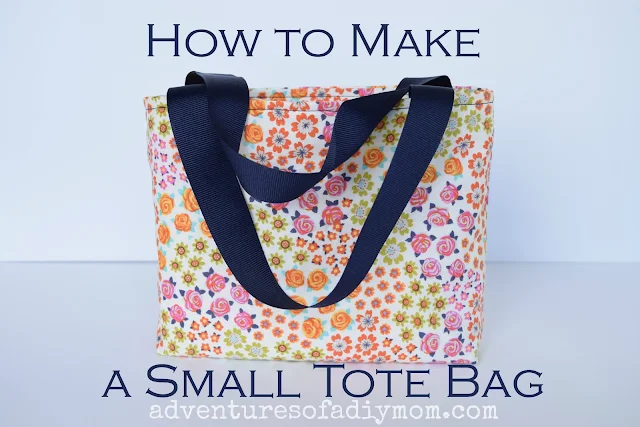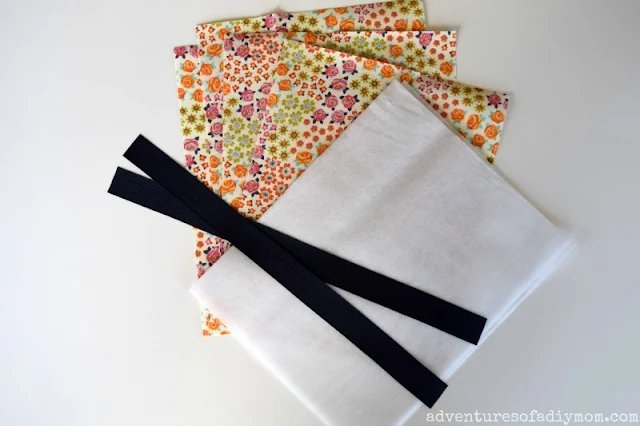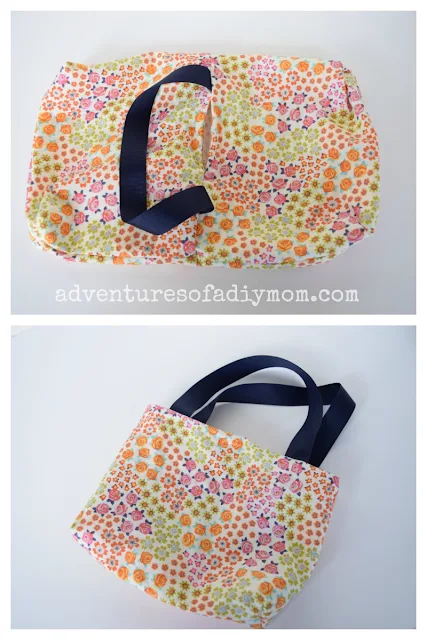How to Make a Small DIY Tote Bag
A few years ago, I made some of these bags for my new young women at church. When the girls come into young women's they are given a lot of booklets and pamphlets. I decided to make little bags for them to carry all this stuff to and from church and/or activities.
They were a big hit! This is the third year I've made them (Follow me on Instagram to see the current year's fabric choice).
I'm actually not even serving in young women's anymore, but my middle daughter is now in young women's, so I just had to make her and her classmates their own little bags.
I didn't realize it until now, but I've made a lot of bags over the years. Here's the list:
More DIY Bags
- Drawstring Bag
- Ruffle Bag
- Farrah Tote Bag
- Turn a Kids Jumper into a Bag
- Painted Canvas Bags
- Diaper Clutch
Here are a few more bags that I'd like to try soon: Dream Bag, One Handle Bag Tutorial, and Drawstring Basket Bag
Follow me on Pinterest for even more DIY Bags
Supplies Needed for a Handmade Tote Bag
fabric (1/4 - 1/3 yard depending on the width of the fabric)
fusible interfacing (1/2 yard)
3/4" or 7/8" ribbon
thread
sewing machine
scissors
Tote Bag with Lining Tutorial
1 - Cut the fabric, interfacing and ribbon
4 pieces of fabric - 8" X 10"
4 pieces of interfacing - 8" X 10"
2 pieces of ribbon - 13 1/2"2 - Press fusible interfacing onto fabric
With a hot iron, and according to the instructions that come with your interfacing, press the interfacing to the fabric. There is usually a textured side to interfacing. This is the "glue", so place it face down on the WRONG side of the fabric. Then slowly press the fabric and interfacing until the "glue" melts and adheres the interfacing to the fabric.New to sewing? You may be wondering "What is interfacing"?
Interfacing is a stiff material used in sewing projects when you want the fabric to be stiffer. Collars, for example, generally use interfacing.
For this project, since I knew that the fabric was quite flimsy for a bag, I opted to add interfacing to give it a bit more stability. I chose a lightweight interfacing. A stiffer interfacing may be a better choice if making a large bag.
There are many types and thicknesses of interfacing. I found two articles that may be helpful: What to know when buying interfacing and When and how to use interfacing.
For this project, since I knew that the fabric was quite flimsy for a bag, I opted to add interfacing to give it a bit more stability. I chose a lightweight interfacing. A stiffer interfacing may be a better choice if making a large bag.
There are many types and thicknesses of interfacing. I found two articles that may be helpful: What to know when buying interfacing and When and how to use interfacing.
3 - Sew the bag and sew the lining
Lay one piece of fabric on top of another with RIGHT sides together. Sew along both short sides and along the bottom. Clip the corners. Repeat with the remaining two pieces of fabric.
One of these pouches will become the bag and the other will be the lining.
4 - Create the bottom of the bag
This is probably one of the hardest parts to explain, so if you don't understand what I'm saying, watch the video at the end of the post!
With the wrong side still facing out, line up the side seam and the bottom seam so that they create a point on one side of the bag. Now sew a perpendicular seam one inch from the point. Repeat this process with the other side of the pouch. Repeat this process with the other pouch.
5 - Pin ribbon handle to the bag.
Turn one of the pouches right side out. Pin one piece of ribbon 1 1/2" from the end of the bag. Pin the other end of the same piece of ribbon 1 1/2" from the other end of the bag. Add a ribbon to the back side of the bag in the same way.
6 - Pin the lining to the bag
Insert the pouch with the ribbon inside the other pouch which is still wrong side out. The fabric should now be right sides together. Pin along the top matching seams and ribbon handles.
7 - Sew lining to bag
Sew along the top of the bag, leaving a 3 inch opening. I would recommend sewing a 5/8" seam allowance, even though I did not do this on this particular bag.
8 - Turn tote bag right side out
Turn the bag, so that the right side of the fabric is out. Pull the fabric through the opening. At first it will look wrong (see below). Simply tuck one side of the bag inside the other to create your tote.
9 - Finish off the bag with a top stitch
The last step is to close up the opening. The easiest way to do this is simply top stitch around the top of the entire bag, sewing the opening closed in the process.
Tip: If you press the top of the bag flat before sewing, the end result will look much neater and more professional.
Have you made this bag? I'd love to see pictures! Tag me on IG @adventuresofadiymom or shoot me an email: contactdiymom@gmail.com












I've always been way too intimidated to sew a bag. But your instructions are great! I think I could handle this!
ReplyDeleteWhat a darling tote bag! We use bags ALL THE TIME at our house. I love this tutorial - I'll have to make some!
ReplyDeleteThis is such a cute bag. I love sewing. I need about 6 more hours in the day with sleeping kids so I can sew my heart out.
ReplyDeleteThis is adorable! It makes me wish I knew how to sew!
ReplyDeleteWonderful tutorial & super cute print! My niece loves little tote bags. #Inspiremycreativity Thanks for sharing at Merry Monday!
ReplyDeleteWhat a cute bag. I love finding fun and simple sewing projects.
ReplyDeleteHi, love your tote bag :)
ReplyDeleteThis is such a cute bag! I love how thorough your tutorial is for those of us (like me) who don't know a whole lot about sewing. I think even I could do this! Thanks so much for sharing at Sweet Inspiration!
ReplyDeleteI love this! You can never have too many totes, right?!
ReplyDeleteThanks for the tutorial. I was needing help putting an embroidered bag together and this will be a big help.
ReplyDelete